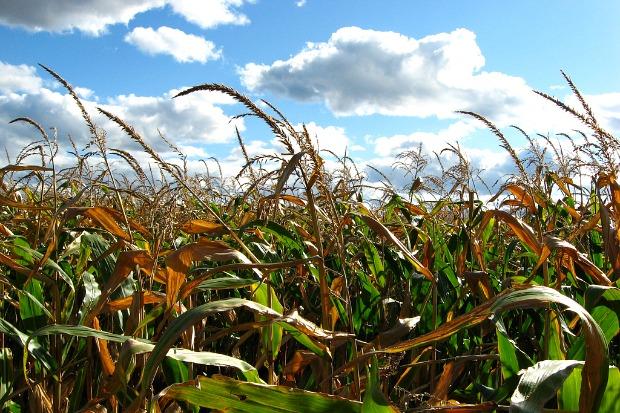More than 365 million acres of genetically engineered (GE) crops were cultivated in 29 countries in 2010, Food & Water Watch (FWW) reported late last week. Where does the U.S. stand in that figure? At the front of the line, leading global production with 165 million acres.
For every acre that's planted, a question seems to pop up. What are the environmental risks? Is this a long-term solution? How do genetically modified foods compare to non-genetically modified foods?
FWW sheds light on some of those questions in a new report, "Genetically Engineered Food: An Overview." The answers, reports the nonprofit consumer rights group, are not reassuring. Here are a few that came up.
Are genetically engineered animals next?
There are fewer transgenic animals than crops, FWW reports, but the number of genetically engineered animals that are awaiting government approval has accelerated in recent years.
Animal-related developments in biotechnology also include livestock treatments designed to combat the negative effects of factory-farmed livestock. Think rBGH, the growth hormone that, when given to cows, boosts milk production - and can lead to health problems such as udder infections and the growth of antibiotic resistance.
Comment: To learn more about the truly mad science behind 'genetically modified animals' read the following articles:
FDA Set to Approve Genetically Engineered Animals
Genetically modified cows produce "human" milk
Chinese Scientists Genetically Modify Dairy Cows to Produce Human Breast Milk
Genetically Modified Frankenfish!
Genetically Modified Salmon Present a Number of Risks to Consumer Health and Environment
Genetically Engineered Goat Experiments Produce Genderless Offspring
Genetically Engineered Pigs
It gets weirder.
Instead of fixing conditions on factory farms, researchers are finding ways to work around problems - like pollution - that are caused by unsanitary, overcrowded operations. FWW reports:
One Canadian university is developing transgenic Enviropigs that produce the phosphorus-absorbing enzyme phytase as a way to decrease the phosphorus levels from manure that commonly pollutes waterways.Are genetically modified foods regulated?
Uncoordinated efforts and lax enforcement among the U.S. Department of Agriculture (USDA), the Environmental Protection Agency (EPA), and the Food and Drug Administration (FDA) have led to low standards of regulation, allowing potentially dangerous products to slip through unchecked.
FWW reports:
Federal regulators approve most applications for GE field trials, and no crops have been rejected for commercial cultivation. Although some biotechnology companies have withdrawn pending applications, federal regulators approve most GE crops despite widespread concerns about the risk to consumers and the environment.Are they safe to eat?
The FDA is responsible for overseeing the safety of genetically engineered food. But there's a hitch: the agency doesn't run tests to determine the safety of the food; instead, it evaluates whether a genetically engineered food item is similar to its non-GE counterpart, then classifies is as "generally recognized as safe" (GRAS) or as a "food additive."
The FDA has recognized 95 percent of foods (and traits of food) submitted for evaluation as GRAS since 1998. So why not more extensive safety studies?
FWW reports:
"Safety studies on GE foods are limited because biotechnology companies prohibit cultivation for research purposes in their seed licensing agreement."For more information on genetically engineered foods, see Food &Water Watch's full report here (PDF).




I can't believe that they are not labeling these products and are not more concerned about its safety! Does this food produce our necessary vitamin intake?? Does the fats behave as normal fats?
Is there any long term reprocusions? Is it going to make us fatter in the long run? IS It really safe??
If they have mastered this, it's wonderful for all those in other countries with starving people, TRUE!! And starvation should seize to exist. AWESOME!! But, perhaps before putting in UNLABELED packages and selling it in our grocery stores...they should first feed all the starving people and observe if it works for them in the long run. IT REALLY angers me that they are getting away with NOT NOTIFYING US when we are purchasing these products!! I'm paying
Good money for our food and would rather the REAL THING!!!